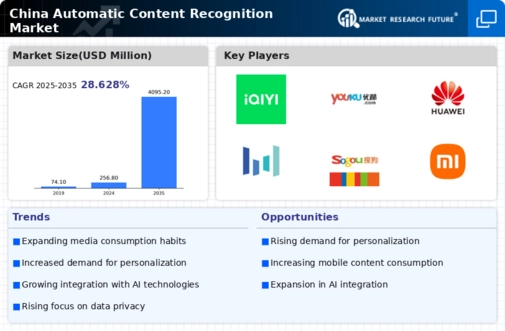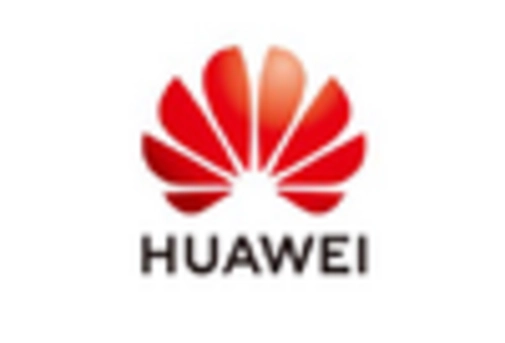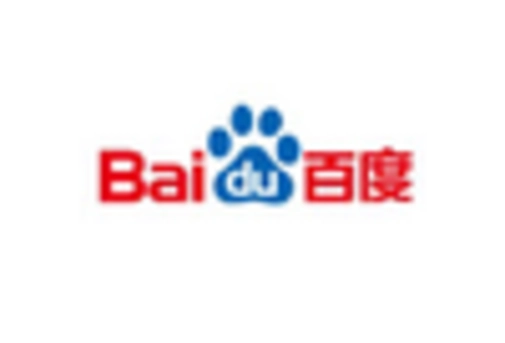Growth of E-commerce Platforms
The expansion of e-commerce platforms in China is a significant driver for the automatic content-recognition market. As online shopping continues to gain traction, retailers are increasingly utilizing automatic content-recognition technologies to enhance product discovery and improve customer experiences. By integrating these solutions, e-commerce platforms can analyze user-generated content, such as reviews and images, to provide personalized recommendations. This trend is expected to contribute to a projected increase in the automatic content-recognition market's value, with estimates suggesting a growth rate of approximately 12% annually over the next five years. Consequently, businesses are likely to invest in these technologies to remain competitive in the rapidly evolving digital marketplace.
Emergence of Smart Devices and IoT
The rise of smart devices and the Internet of Things (IoT) in China is a crucial factor influencing the automatic content-recognition market. As more devices become interconnected, the demand for seamless content recognition across various platforms is increasing. Automatic content-recognition technologies are being integrated into smart TVs, mobile devices, and home assistants, enabling users to access and interact with content effortlessly. This integration is expected to drive market growth, with projections indicating a potential market size of $800 million by 2025. The convergence of smart technology and automatic content-recognition solutions presents opportunities for innovation, as companies strive to enhance user experiences and capitalize on the growing trend of connected devices.
Rising Demand for Content Personalization
The automatic content-recognition market in China is experiencing a notable surge in demand for personalized content. As consumers increasingly seek tailored experiences, businesses are leveraging automatic content-recognition technologies to analyze user preferences and deliver customized content. This trend is particularly evident in sectors such as entertainment and advertising, where companies are investing heavily in these technologies to enhance user engagement. According to recent estimates, the market for personalized content is projected to grow at a CAGR of over 15% through 2027. This growth is likely to drive the adoption of automatic content-recognition solutions, as organizations aim to refine their content delivery strategies and improve customer satisfaction.
Advancements in Machine Learning Algorithms
The automatic content-recognition market in China is significantly influenced by advancements in machine learning algorithms. These innovations enhance the accuracy and efficiency of content recognition processes, enabling businesses to identify and categorize content with greater precision. As machine learning techniques evolve, they facilitate the development of more sophisticated automatic content-recognition systems that can analyze vast amounts of data in real-time. This capability is particularly valuable in sectors such as media and entertainment, where timely content identification is crucial. The increasing investment in research and development within this domain suggests a robust growth trajectory for the automatic content-recognition market, potentially reaching a valuation of $1 billion by 2026.
Increased Focus on Intellectual Property Protection
The automatic content-recognition market in China is also driven by a heightened focus on intellectual property protection. As digital content proliferation accelerates, the need for effective content monitoring and copyright enforcement becomes paramount. Automatic content-recognition technologies offer solutions for identifying unauthorized use of copyrighted materials, thereby assisting businesses in safeguarding their intellectual property rights. This trend is particularly relevant in the entertainment and media sectors, where content piracy poses significant challenges. The growing awareness of these issues is likely to propel investments in automatic content-recognition systems, as companies seek to mitigate risks associated with content infringement and ensure compliance with legal standards.




















Leave a Comment